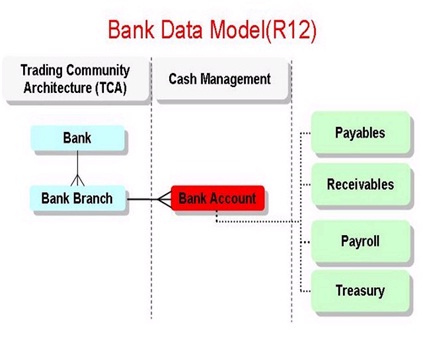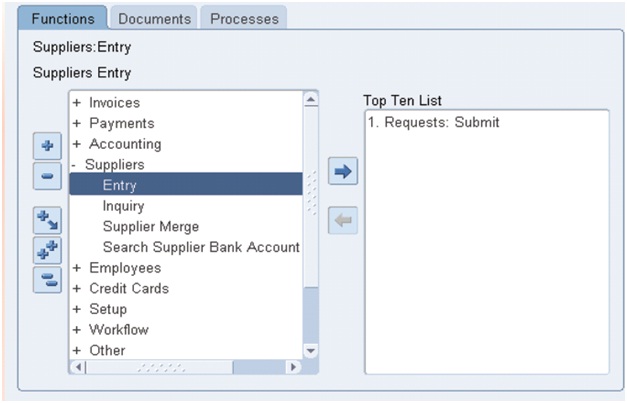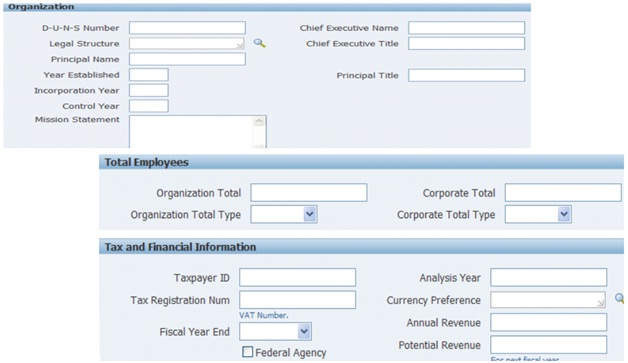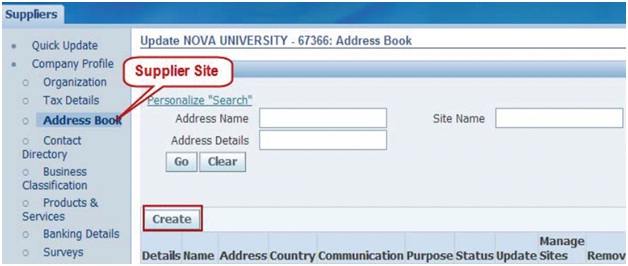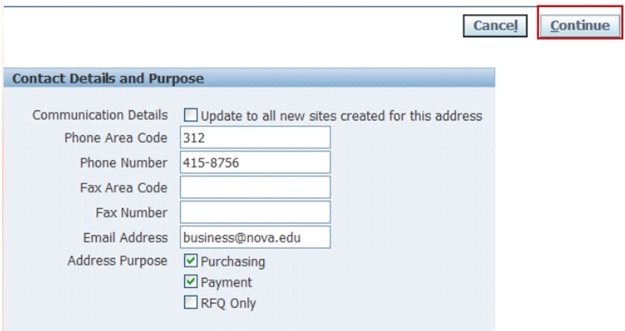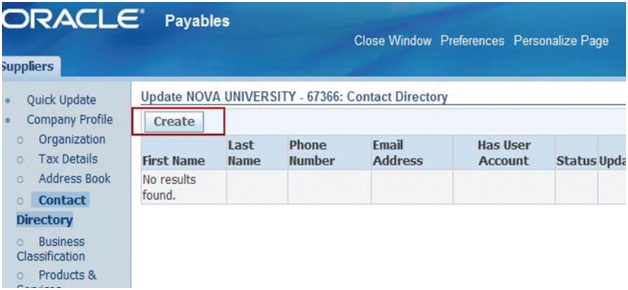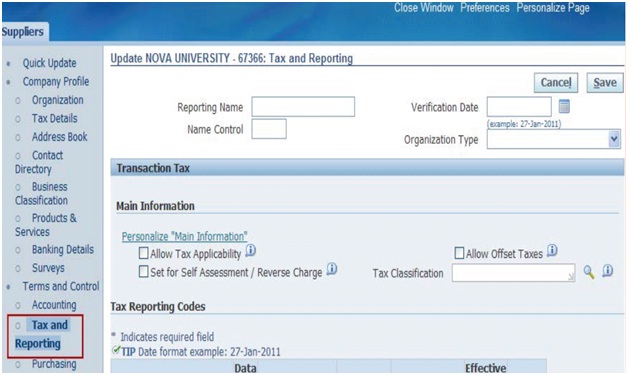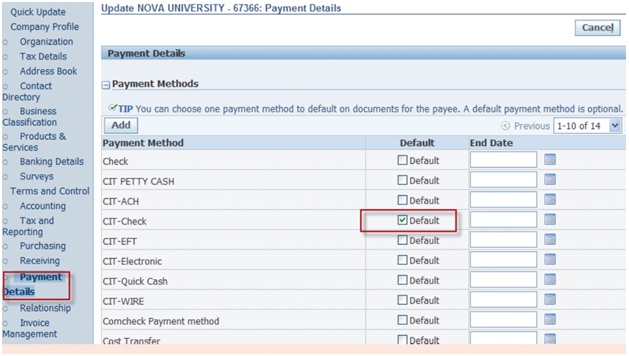Introduction
An organization's operations include the buying and selling of
products and services. Items can represent the products and services
that are purchased and sold in an organization. Let's start by looking
at the Item creation process.
The following diagram details the process for creating Items:
- The Item Requester (the person who requests an Item) completes an Item Creation Form, which should contain information such as:
- Costing information
- Pricing Information
- Item and Product Categories
- Details of some of the Item attributes
- The inventory organization details
- Once complete, a message is sent to the Master Data Manager (the person who maintains the master data) to create the Item. The message could be sent by fax, e-mail, and so on.
- The Master Data Manager reviews the form and enters the
details of the Item into Oracle E-Business Suite by creating the Item.
Once complete, a message is sent to the Item Requester.
- The Item Requester reviews the Item setup on the system.
Let's look at how Items are created and explore the underlying concepts concerning the creation of Items.
Creating Items
Oracle Inventory provides us with the functionality to create Items.
Sets of attributes are assigned to an Item. The attributes define the
characteristics of the Item. A group of attributes values defines a
template, and a template can be assigned to an Item to automatically
define the set of attribute values.
An Item template defines the Item Type. For example, a
Finished Good
template will identify certain characteristics that define the Item as a
finished good, with attributes such as "Inventory Item" and "Stockable"
with a value of "Yes". Let's look at how to create an Item in Oracle
Inventory. We will also assign a
Finished Good template to the Item.
Getting ready
Log in to Oracle E-Business Suite R12 with the username and password
assigned to you by the System Administrator. If you are working on the
Vision demonstration database, you can use OPERATIONS/WELCOME as the
USERNAME/PASSWORD:
- Select the Inventory Responsibility.
- Select the V1 Inventory Organization.
How to do it...
Let's list the steps required to create an Item:
- Navigate to Items | Master Items. Please note that Items are defined in the Master Organization.
- Enter the Item code, for example, PRD20001.
- Enter a description for the Item:
- Select Copy From from the tools menu (or press Alt+T). We are going to copy the attributes from the Finished Good template:
- We can also copy attributes from an existing Item.
- Enter Finished Good and click on the Apply button (or press Alt+A) and click on the Done button.
- Save the Item definition by clicking on the Save icon (or press Ctrl+S).
How it works...
Items contain attributes and attributes contain information about an
Item. Attributes can be controlled centrally at the Master Organization
level or at the Inventory Organization level.
There's more...
Once the Item is created, we need to assign it to a category and an inventory organization.
Assigning Items to inventory organizations
For us to be able to perform transactions with the Item in the
inventory, we need to assign the Item to an inventory organization. We
can also use the organization Item form to change the attributes at the
organization level. For example, an Item may be classified as raw
materials in one organization and finished goods in another
organization.
- From the Tools menu, select Organization Assignment.
- Select the inventory organization for the Item. For example, A1–ACME Corporation. Click on the Assigned checkbox.
- Save the assignment.
Assigning Items to categories
When an Item is created, it is assigned to a default category.
However, you may want to perform transactions with the Item in more than
one functional area, such as Inventory, Purchasing, Cost Management,
Service, Engineering, and so on. You need to assign the Item to the
relevant functional area. A category within a functional area is a
logical classification of Items with similar characteristics.
- From the Tools menu, select Categories.
- Select the Categories Set, Control Level, and the Category combination to assign to the Item:
- Save the assignment.
Exploring Item attributes
There are more than 250 Item attributes grouped into 17 main
attribute groups. In this recipe, we will explore the main groups that
are used within the financial modules.
How to do it...
Let's explore some Item attributes:
- Search for the Finished Good Item by navigating to Items | Master Items:
- Click on the Find icon. You then enter the Item code and click on the Find button to search for the Item.
- Select the tabs to review each of the attributes group:
- In the Main tab, check that the Item Status is Active. We can also enter a long description in the Long Description field.
- The default value of the primary Unit of Measure (UOM) can be defined in the INV: Default Primary Unit of Measure
profile option. The value can be overwritten when creating the Item.
The Primary UOM is the default UOM used in other modules. For example,
in Receivables it is used for invoices and credit memos.
- In the Inventory tab, check that the following are enabled:
- Inventory Item: It enables the Item to be transacted in Inventory. The default Inventory Item category is automatically assigned to the Item, if enabled.
- Stockable: It enables the Item to be stocked in Inventory.
- Transactable: Order Management uses this flag to determine how returns are transacted in Inventory.
- Reservable: It enables the reservation of Items during transactions. For example, during order entry in Order Management.
- In the Costing tab, check that the following are enabled:
- Costing: Enables the accounting for Item costs. It can be overridden in the Cost Management module, if average costing is used.
- Cost of Goods Sold Account: The cost of goods sold account is
entered. This is a general ledger account. The value defaults from the
Organization parameters.
- In the Purchasing tab, enter a Default Buyer for the purchase orders, a List Price, and an Expense Account. Check that the following are enabled:
- Purchased: It enables us to purchase and receive the Item.
- Purchasable: It enables us to create a Purchase Order for the Item.
- Allow Description Update: It enables us to change the description of the Item when raising the Purchase Order.
- RFQ Required: Set this value to Yes to enable us to require a quotation for this Item.
- Taxable: Set this value to Yes with the Input Tax Classification Code as VAT–15%. This can be used with the default rules in E-Tax.
- Invoice Matching: Receipt Required–Yes. This is to allow for three-way matching.
- In the Receiving tab, review the controls.
- In the Order Management tab, check that the following are enabled:
- Customer Ordered: This enables us to define prices for an Item assigned to a price list.
- Customer Orders Enabled: This enables us to sell the Item.
- Shippable: This enables us to ship the Item to the Customer.
- Internal Ordered: This enables us to order an Item via internal requisitions.
- Internal Orders Enabled: This enables us to temporarily exclude an Item from internal requisitions.
- OE Transactable: This is used for demand management of an Item.
- In the Invoicing tab, enter values for the Accounting Rule, Invoicing Rule, Output Tax Classification Code, and Payment Terms. Enter the Sales Account code and check that the Invoiceable Item and Invoice Enabled checkboxes are enabled.
Creating Item templates
An Item template is a set of attributes that enable the 'quick'
creation of an Item. In this recipe, we will create an Item template
that can be used to create many similar Items. We will copy from the
Finished Good template to our new template called
ACME Finished Good.
Getting ready
Log in to Oracle E-Business Suite and select the Inventory responsibility.
How to do it...
Let's list the steps required to create an Item template:
- Navigate to Setup | Items | Templates.
- Select the Inventory Organization.
- From the Find Item Templates form, click on New button or press Alt+N.
- In the Template field, enter the name of the new template; for example, enter ACME Finished Good.
- In the Description field, enter a suitable description, for example, enter ACME Finished Good Template.
- Select Copy Template from the Tools menu.
- We can use this form to select the attributes groups that we want to copy from the Finished Good template.
- Click on the Apply button.
- Click on the Done button.
- In the dialog box presented to us, with the message "Do you want to save the changes you have made?", click on the Yes button.
How it works...
Item templates can be created from scratch. To make the template
creation process easier, Oracle has provided us with a number of seeded
templates as a starting point to copy from. We can also combine
templates and manually amend the attributes to define our template. When
we copy from an existing template, we have choices that determine how
the copy will occur.
The three main choices are as follows:
- Overwrite: All selected attribute values are copied to the new template and any values that we have manually created will be overwritten.
- Append: Attributes that have no value will be copied across
to our template. This mode is useful if you are using a combination of
templates.
- Overwrite Not Null: Only the selected attributes that contain values will be copied.
There's more...
Let's amend the template to allow us to automatically populate the
template with some default values. Let's create an Item and apply the
amended template to the Item.
Amending the template
Let's search for the template and amend the templates to include some of the default values:
- Search for the ACME Finished Good template by navigating to Setup | Items | Templates.
- Enter ACME Finished Good in the Template field and click on the Find button.
- Click on the Open button to view the template.
- In the Attributes Group region, select Purchasing and enter some default values, for example:
- Default Buyer: Stock, Ms. Pat
- Input Tax Classification Code: VAT-15%
- Taxable: Yes
- Allow Description Update: Yes
- Receipt Required: Yes
- Save the template.
- In the Attributes Group region, select Receiving and enter some default values, for example:
- Over-Receipt Qty Action: Warning
- Receipt Routing: Direct Delivery
- Days Early Receipt Allowed: 5
- Days Late Receipt Allowed: 2
- Receipt Date Action: Warning
- Save the template.
- In the Attributes Group region, select Invoicing and enter some default values, for example:
- Accounting Rule: Immediate
- Payment Terms: Immediate
- Save the template.
Creating an Item and applying the template to the Item
Let's create an Item and apply the template to the Item:
- Navigate to Items | Master Items.
- Enter the Item code and description.
- Select Copy From in the Tools menu.
- Click on the Apply button.
- Click on the Done button. This action will validate the template created.
- Click on the Purchasing tab to review the default values of the attributes assigned automatically by the template.
- Save the Item.
Exploring Item controls
During the creation of Items, we may decide to restrict the use of
the Items by controlling Items within an Inventory Organization. When an
Item is defined, it is defined in the Item Master Organization and can
then be assigned to other Inventory Organizations. Items are then held
in Subinventories, which can contain Locators. Locator, Serial number,
Lot number, and Revision number within a Subinventory can be used to
control Items. In this recipe, we will explore some of the control
parameters for Items.
Getting ready
Log in to Oracle E-Business Suite and select the Inventory responsibility.
How to do it...
Let's explore the following Item controls:
- Item Status
- Item Attribute
The Item Status is the status of an Item and it determines the
actions that can be performed on an Item. For example, an obsolete Item
may not be sold to the customer, but can be used as parts for repairs
and can still be stockable. Let's create an Item status for obsolete
Items.
- Navigate to Setup | Items | Status Code.
- In the Status field, enter Obsolete and ACME Obsolete in the Translated Status field.
- Enter a Description, for example, ACME Obsolete Items.
- Enable the following attributes:
- BOM Allowed
- Stockable
- Transactable
- Save the form.
The levels that the attributes can be controlled at are set in the
Item Attribute Controls form. Let's look at some of the Item Attribute
Controls:
- Navigate to Setup Items | Attribute Controls|
- From the menu, select View | Query By Example | Enter (or press F11 on the keyboard).
- In the Group Name field, enter Main%.
- From the Menu, select View | Query By Example | Run (or press Ctrl+F11 on the keyboard).
- Observe that some attributes are controlled at the Master Level and some at the Org Level.
- Close the form.
There's more...
Items are stored in a Subinventory and can be controlled using a locator. Items can be identified by lot and by serial numbers.
Storing Items by Subinventories
Subinventories are distinct separations of Items within an Inventory
Organization. Subinventories can be physical or logical. Items within an
Inventory Organization must reside in a Subinventory.
Transactions are performed from the Subinventories. Examples of
Subinventories include: finished goods, van, stores, staging area, and
fast moving goods. Let's create a finished goods Subinventory and
restrict an Item to the Subinventory.
- Navigate to Setup | Organizations | Subinventories.
- Click on the New button.
- In the Name field, enter ACME-FG.
- In the Description, enter ACME Finished Goods.
- In the Locator Control field, select Item level. This will enable the Inventory transactions for this Subinventory to use locator control, which we define at the Item level.
- Save the record.
Let's restrict an
Item to the
Subinventory:
- Navigate to Items | Organization Items.
- Search for the PRD20001 Item.
- Select the Inventory tab and select the Restrict Subinventories checkbox.
- Save the record.
- In the Tools menu, select Items Subinventories.
- Select ACME-FG in the Subinventory field.
- Save the record.
Storing Items by locators
Stock locators identify the physical areas where Items are stored.
Additional controls can be placed on the Items in stock locators. For
example, we can control the shelf life of an Item with stock locators.
Stock locators are usually defined as Row, Rack, and Bin. Let's create
three stock locators for the ACME Finished Goods Subinventory and
restrict an Item by locator control:
- Navigate to Setup | Organizations | Subinventories.
- Search for the ACME-FG Subinventory (press F11 on the keyboard, and enter the search mask ACME%, then press Ctrl+F11 on the keyboard).
- Click on the Locator button to enter the locator details.
- Enter A1.1.1 in the Locator field.
- In the Description field, enter ACME FG 1.
- In the Type field, select Storage Locator.
- Enter another row for A1.1.2, ACME FG 2, with Storage Locator in the Type field.
- Repeat for A1.1.3, ACME FG 3, with Storage Locator in the Type field.
- Save the record.
The structure of the stock locator is defined in the stock locator
Flexfield structure and can be defined to fit your business
requirements. Locator Control can be "prespecified" before they are used
or can be defined dynamically as Items are received or shipped.
Let's restrict an Item to the
Locator:
- Navigate to Items | Organization Items.
- Search for the PRD20001 Item.
- Select the Inventory tab, select the Restrict Locators checkbox, and then select the Locator Control as Prespecified.
- Save the record.
- In the Tools menu, select Items Subinventories.
- Select A1.1.1 in the Locator field.
- Save the record.
Identifying Items by lot control
A lot of numbers can be used to identify Items that share the same
specifications. For example, lot numbers can be used to specify the
expiry period of an Item. Let's look at how to use lot numbers to
control Items. We will impose a shelf life of 30 days on the Item and
assign lot numbers to the Item:
- Navigate to Items | Organization Items.
- Search for the PRD20001 Item.
- Select the Inventory tab.
- In the Lot Expiration (Shelf Life) region, select the Control field and select Shelf Life Days.
- Enter 30 as the number of days.
- In the Lot region, select Full Control in the Control field.
- Save the record.
Tracking Items using serial control
Serial numbers can be used to track an Item. A serial number is assigned to each unit of the Item, if serial control is used:
- Navigate to Items | Organization Items.
- Search for the PRD20001 Item.
- Select the Inventory tab.
- In the Serial region, select the Generation field, and select At Receipt. This will allow us to specify the format of the serial numbers at the time of receipt.
- Save the record.
Controlling Items using revisions
Items can have versions. Item versions are controlled using revisions. For example, we can decide to make the
PRD20002
revision controlled, and have another version of the Item. Let's change
the attribute to revision controlled and add a revision
B to the Item:
- Navigate to Items | Organization Items.
- Search for the Item PRD20002.
- In the Inventory tab, enable the Revision Control checkbox.
- In the displayed message, select OK.
- Save the Item.
- From the Tools menu, select Revisions.
- Add a line for Revision B of the Item with the description Revised Widget.
- Save the record.





































